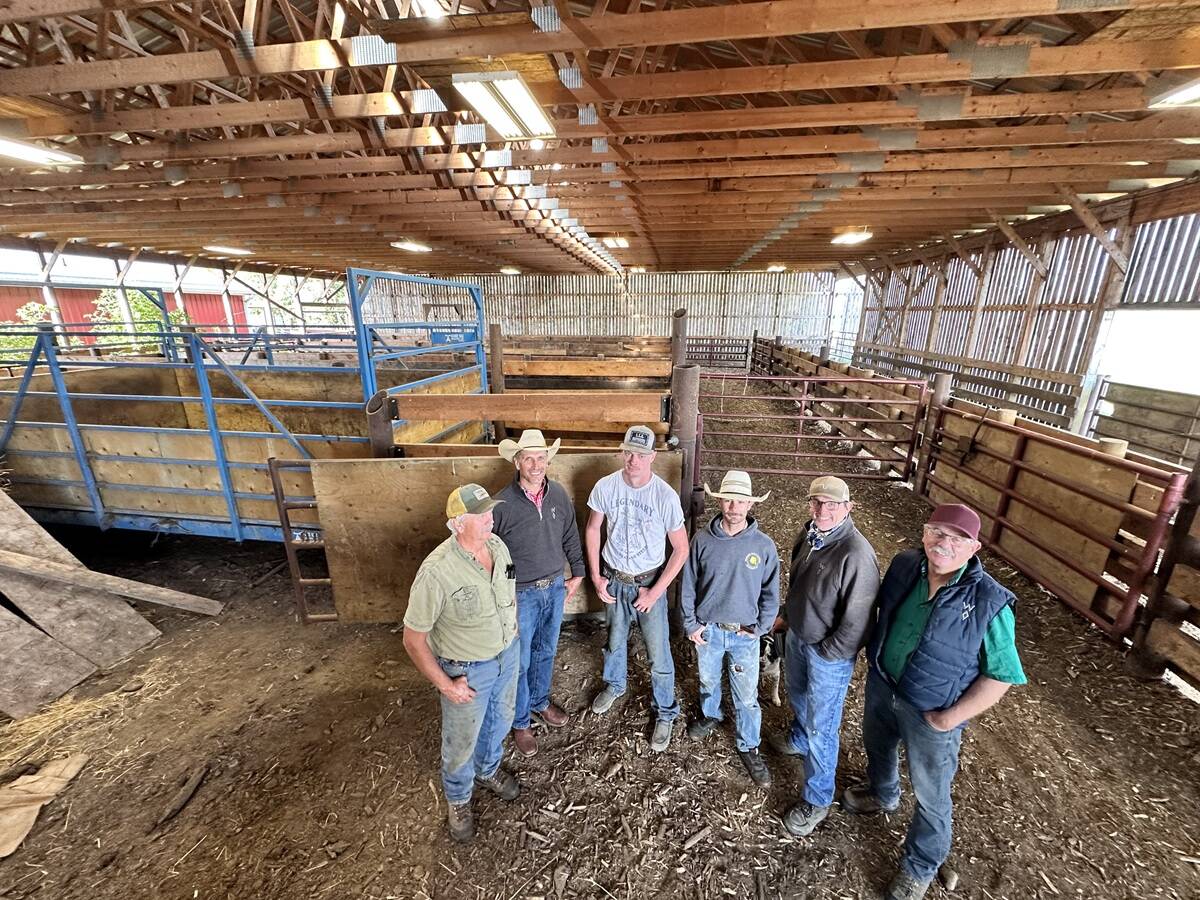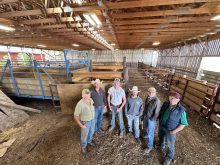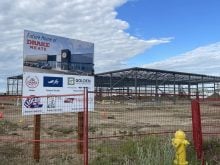Genomics is a word we have been hearing quite a bit of in the press and has been reported in this magazine more than once. Basically genomics is the study of the DNA of an animal and how it is passed down through generations. In the case of cattle this DNA is contained in 60 chromosomes. Each time a calf is conceived the sire passes on 30 chromosomes and the dam contributes the same. During this process, we cannot be sure which chromosomes are passed on and to further complicate matters the DNA is mixed and matched during the process as well. In essence each sire and dam passes on parts of chromosomes that are re-sorted into a complete genetic unit. This process involves nearly three billion base pairs of DNA for each cow. So the real question is what DNA did an animal get and what does it pass on?
Read Also

Farm families work together to graze cropland with cattle in the fall
These Alberta farm families have separate operations, but work together to manage their land
The way we have selected cattle in the past has been through “like begets like.” In other words we look at a cow and decide we like her and hope she reproduces herself. Breed associations started adding precision to this process around 200 years ago by tracking pedigree. By knowing what family a cow comes from we can make a better rough estimate of the characteristics that cow may contain in her DNA.
Roughly 50 years ago we started formally collecting weights and measures on cattle. By knowing the family tree and closely tracking differences, determining differences between the DNA content of animals became more precise. With the addition of analytical mathematics to logically examine the data and the pedigree of the animals, EPD provide an even more accurate insight into the DNA content of potential breeding stock.
With new DNA technology it has now become possible to examine the DNA of the animal directly to obtain clues and information about what is contained in those three billion base pairs. DNA consists of four specific units called nucleotides which we can label as A, T, G and C. A always matches up with a T and C with a G and these are what we mean by “base pairs.” If one of these matches such as an AT is replaced with a GC in the string of DNA it can result in a difference in the instructions for building the animal. This single change is called a single nucleotide polymorphism or SNP (SNIP); basically translated as a change in one DNA pair. Many changes don’t result in any difference in an animal, but some of these changes can result in significant differences. By looking at data and pedigree information, we can find SNP markers that indicate where these changes occur and if they are impacting traits in the animal.
SNP markers are fairly evenly distributed across the DNA of an animal, similar to road signs or mile markers on the highway. By themselves they do not mean much, other than to give us a frame of reference where we are on the genetic map. By looking at the mile markers in conjunction with data and pedigree we can find which pieces of DNA or which mile markers we are at when specific events occur. Perhaps every time we run across a record from cows that are 15 years old and still in the herd, markers 1a and 7a are present. Heifers that are open consistently show marker 1b and 7b. These could then be candidates to test for the possibility of longevity in a population of cattle. These markers are contained on chips or panels which basically contain markers for anywhere from 100 to nearly one million SNPs.
Companies that build panels essentially paste the SNP markers onto special plates. A 50K panel has roughly 50,000 markers stuck to it, and a 770K panel has 770,000 and so on. The machinery to read each type of plate is a little bigger than a countertop microwave and pretty comparable to the cost of a new combine.
As the number of markers increases so does the cost, but it provides more in-depth testing, since the mile markers are closer together. The process of finding these informative SNPs and documenting the effect each one explains is called “training” the panel. It is extremely important to recognize that while an informative SNP can be the actual change or mutation in the gene that is causing the trait to change, in many cases the SNP is just a road marker that is close to or associated with the phenotypic difference. It is equally important to realize that because DNA creates differences between animals, different populations may have different SNPs that show differences. In other words, when we look at an Angus compared to a Hereford or a Charolais we can see visible differences caused by differences in DNA. Because there are differences in the DNA, a panel developed on an Angus population may not give us any insight into a Hereford, Charolais or crossbred population. Another important realization is that it is impossible for any farmer or rancher to interpret 750,000 pieces of DNA information.
So how do we make this stuff useful?In order to assess various traits, the DNA results are actually used in the calculation of EPD. EPD describe differences in expected progeny performance using math and logic applied to pedigree and performance information to determine what relative DNA is present in the animal. By directly measuring some of the animal’s DNA and adding that into the equation we can increase the accuracy of our prediction substantially. In other words, we normally have to use pedigree information and the animal’s own performance and then wait and measure performance in calves in order to more accurately determine what DNA the animal contains and will pass on. By measuring the DNA directly we can obtain a good bit of that information at a very early age. Some of the work to date has provided added information from DNA markers equivalent to 15 to 25 calves, depending upon the trait.Increasing the accuracy of selection and doing so at an early age allows us to shave years off of generation intervals and make fewer mistakes within a breeding program, however, because we can move so much more quickly it is vital we make sure that we know our breeding objectives.
One of the ongoing challenges will be to obtain meaningful data on phenotypes that can be used in continuing to train panels and investigate new traits such as disease resistance or fatty acid profiles in beef. Because the three billion base pairs are continually rearranging and transforming themselves, it is important to re-evaluate or train the DNA panels every so often. This can only be done with data such as weights and measurements on the animal and DNA samples. Collecting data actually gets more important with the advent of DNA.
There are many other applications of the technology such as parentage. The ability of genomic technology to assess hard-to-measure traits such as feed efficiency or longevity early in life gives a tremendous jump to beef cattle breeding, a jump substantial enough that this author believes the technology is here to stay.















